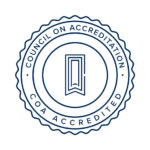MetroWest Chamber: Strategies for Coping With the Physical Effects of Trauma

This article originally appeared in the Framingham Source on April 20, 2021
By Anastasia Lynge
Counselor with Wayside Youth & Family Support Network’s Trauma Intervention Services Program
FRAMINGHAM – In the past year, our crisis line counselors noticed an increase in from survivors reporting both physical and psychological distress. It came as no surprise – the pandemic has caused many to go into survival mode, and social distancing and quarantine practices have only made accessing services more difficult for survivors of violence.
The physical impacts of trauma remain severely under addressed within survivor support services. It is critical that survivors can care for themselves in both small and large ways, especially when the world is in an unstable place.
For many trauma survivors, chronic psychological distress is a daily reality. The symptoms of trauma, including hypervigilance, nightmares and insomnia, anxiety, panic, and flashbacks, are reflective of memories that are ‘stuck’ in the conscious and subconscious mind.
Over time, these memories can also become ‘stuck’ in the body as well, leading to chronic pain like migraines and headaches, neck and back pain, chronic pain disorders such as fibromyalgia and inflammatory bowel disease, as well as somatic pain, or the re-remembering of physically painful experiences without an outside stimulus.
Chronic pain can make survivors feel like healing from trauma is impossible.
Below are some strategies for coping with, and potentially resolving, the physical symptoms of trauma.
Yoga/stretching: Physical activity can be an incredible source of grounding for trauma survivors if they are not in physical pain. Activities such as gentle yoga and stretching are low impact and reduce tension using guided motion and mindfulness. Yin yoga can be extremely helpful in re-regulating the nervous, system, as it incorporates gentle, guided postures with mindful breathing practice. This synchronicity
can help the nervous system re-regulate itself after periods of intense instability.
Trauma Intervention Services (TIS) offers free and confidential yoga classes on Wednesday nights from 6-7 p.m. Email anastasia_lynge@waysideyouth.org for more information on how to sign up.
Breathing exercises: Breathwork can help to return us to a resting state. An easy and highly effective breathwork practice is called square breathing. Start by inhaling for four counts, then hold the breath at the top of the lungs for four counts. Exhale for four counts, then hold the breath at the bottom of the lungs for four counts. The process of alternating breathing and holding the breath compress the vagus nerve and activates a ventral vagal, or ‘relaxed’ state.
A playlist of guided breathing exercises can be found here: https://open.spotify.com/playlist/2xL5DkfVtqFzPJM8eWSQSO?si=0d7de442e0164b17
Anti-inflammatory herbs and diet: Medication and physical therapy are commonly used to treat chronic pain conditions there are also several herbs and foods can be helpful in reducing the inflammation caused by many chronic pain conditions. With the guide of a medical professional, herbal supplements such as turmeric, white willow bark, and Saint John’s Wort can be a way to manage pain. Incorporating
certain foods into the diet may also reduce inflammation – common anti-inflammatories include berries, peppers, foods high in natural fats (such as olive oil, avocados and fatty fish) and dark chocolate. Incorporating favorite foods into a meal can also be a way of grounding when experiencing difficult emotions, flashbacks, or panic.
Heat and ice: The use of extreme temperature can ‘shock’ the nervous system back into regulation. Heating packs and ice can make pain more manageable. Warm showers and baths can be a way for the body to relax after experiencing tension and stress.
Acupuncture and acupuncture mats: Acupuncture can be a valuable practice for those experiencing chronic pain, especially in targeted areas. There are ways to incorporate acupuncture techniques into daily practice at home including using an acupuncture mat or pillow or self-massage on acupuncture points. It can be an easy way to relax the facial muscles and muscles of the upper back and neck, which
can be especially tense for survivors.
REST: Allowing the body to relax after trauma can be one of the most difficult aspects of recovery. Truly trusting the body’s instinct, and knowing limits, is especially difficult at a time when people are already experiencing more stress, anxiety and depression. Rest is an essential part of healing; napping, guided meditation and relaxation can help allow our bodies adequate time to recuperate from difficult experiences.
Counseling Services: Counseling offers a way for traumatic experiences to be fully processed, allowing them to become ‘unstuck’ through the body. Survivors can also learn and practice coping skills for dealing with traumatic experiences. Counseling provides survivors with the trust and resources that are necessary for lasting healing.
To access counseling through TIS, please call our hotline at (800) 511-5070 or contact Director, Jeanne Ward, at (508) 494-0498. Follow us on Instagram, @trauma.intervention_wayside, for more information and resources.
***
Editor’s Note: SOURCE and the MetroWest Chamber have formed a partnership. The Chamber’s column will run on Tuesdays on the digital news media outlet. This week’s column is written by Chamber member Wayside Youth & Family Support Network.

